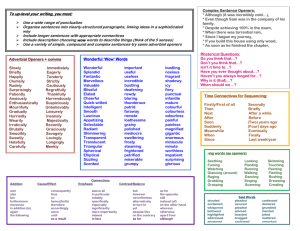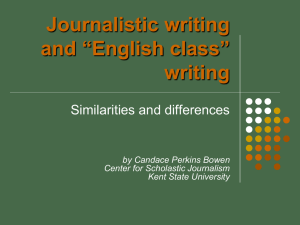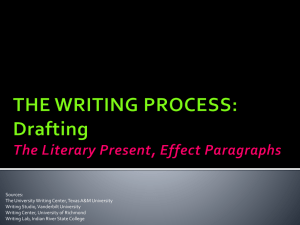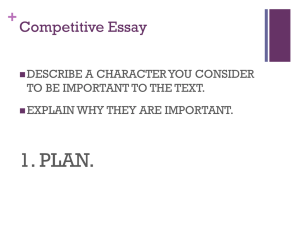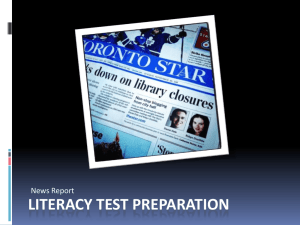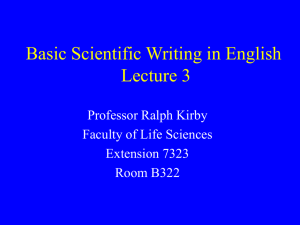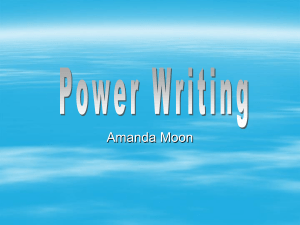File - Key Stage 2 Literacy
advertisement
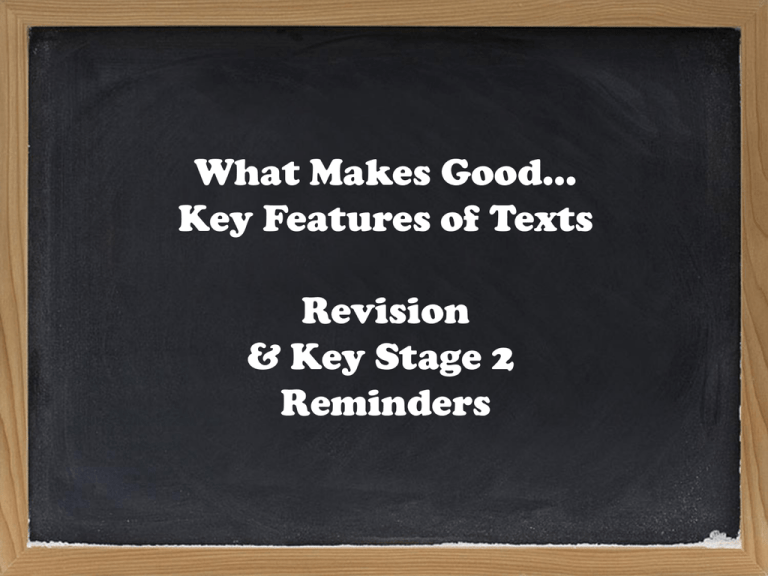
What Makes Good… Key Features of Texts Revision & Key Stage 2 Reminders Evidence/clear facts ‘Scientists suggest…’ Use mostly present tense For or against a particular issue Address the reader using ‘you’ Persuasive phrases Use of rhetorical questions Quote people (experts, professionals, public) What Makes Good… Persuasive Writing? Appeal to the reader’s emotions Paragraphs: intro, 3 key points with evidence, conclusion Exciting and emotive descriptive language Repeat your most important points Openers like ‘you should’ Usually written in time order (chronological) Quotes and use of speech marks Evidence- facts/stats Subheadings to break up the key topics Use of exciting WOW words (vocabulary) Written in columns What Makes Good… Newspaper Report Writing? Mixture of direct and reported speech Illustrations which are relevant with captions underneath Quote people (experts, professionals, public) Cover the 5Ws and How Catchy headlines: puns, alliteration Openers like ‘it is believed’ ‘it is thought’ Clear opening paragraph stating purpose Put in a logical order but not dependant on time Cover the 5Ws and How Rhetorical questions Use subheadings for topic paragraphs Use formal and impersonal language Organise similar ideas into topic paragraphs What Makes Good… Non-Chronological Writing? Avoid moving backwards and forwards from one point to another Discuss ‘people’ and ‘they’ Avoid personal pronoun ‘I’ Stick to facts only! Sum up key points Use appropriate Avoid unfounded in the final technical language judgements/theories paragraph or vocabulary Plan it out using the Story Mountain Introduction: description of character/setting Build up, Climax Resolution, Ending Use a range of figurative language MAPOS Use a range of story openers Dialogue: new speaker, new line Try to include the 5Ws & How What Makes Good… Narrative? (Story Writing) Blend of Description, Action, Dialogue Metaphor, Alliteration Personification Onomatopoeia, Simile Avoid overCharacter’s thoughts complicating with and feelings too many throughout characters/twists Choice: end the story with a cliff-hanger Chronological (in time order) Description of Lots of time thoughts and connectives such as feelings throughout ‘meanwhile’ Discuss future hopes and wishes Get into role quickly and be prepared to ‘be’ the character Use dated entries For authenticity First person narrative ‘I’ What Makes Good… Diary Writing? Is normally written in past tense Generally use informal and talkative ‘chatty’ language A thoughtful Powerful verbs Use paragraphs concluding sentenceand adverbs to for changes in time leave us thinking… show real emotion and/or place Purpose: to inform us Is usually ‘LIVE’ of local, national and therefore current international events and up to date Short and snappy to keep audience engaged Usually third person, past tense & formal Use camera stills & video footage Summarise the main headlines at the beginning What Makes Good… TV News Reports? Carefully ordered: Begin: Politics/Economy End: Sport/Weather Use openers: ‘Good evening…’ ‘News just in…’ Audience appropriate: shorter and informal for children Eyewitness reports/ Mixture of fact & interviews with opinion: but abide public/professionals by truth & accuracy Tell us what we NEED to know & WANT to know


